Hopefully you leave up your fall and winter garden, because the benefits are enormous: seeds and cover for wildlife, litter for overwintering butterflies and stems to gather snow, which insulates and hydrates roots. Of course, the biggest reason — let me hear you say it (seriously, talk out loud to the computer) — is that
the winter garden can be gorgeous, even as gorgeous as the summer one. In fact, I now despise the summer garden with all those gooey gumdrop, sugary flowers giving me sensory overload. Bah. It’s like I’m in the 1960s. Give me the subtle earth tones of dead stems, mysterious seed heads, the ghostly echo of wind-rustled stalks. Let’s look at some of my favorite, most interesting native wildflowers that make a trip out to the winter garden worth putting on gloves, scarves, hats, thermal underwear and snowshoes.
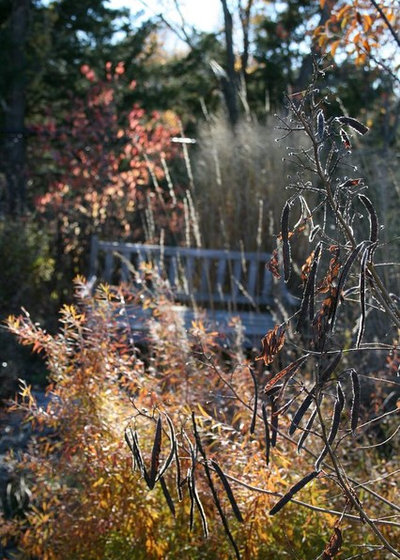
Benjamin Vogt / Monarch Gardens
1. American Senna (
Senna hebecarpa). That’s it on the right, with the long, black, fuzzy seed heads that look like electrified worms in sunlight. Pretty neat, huh? In summer American senna blooms yellow for a month. It prefers medium to moist soil in sun and gets to 4 feet tall and wide. It’s native to the northern Midwest all the way to the East Coast.
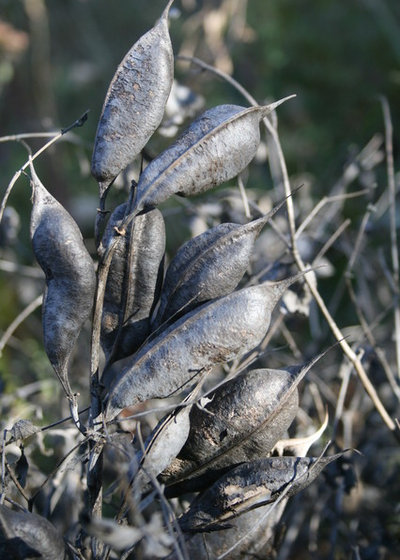
Benjamin Vogt / Monarch Gardens
2. Blue Wild Indigo (
Baptisia australis). There are lots of Baptisia species, but this one is the most common in nurseries. The winter seedpods are large, billowy, hard-shelled things with rattling seeds inside. Drought tolerant and sun loving, it gets to about 4 feet tall and wide and is native from the eastern Plains to the Atlantic.
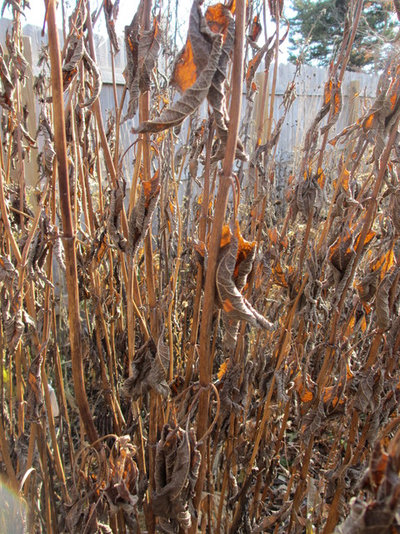
Benjamin Vogt / Monarch Gardens
3. Joe Pye Weed (
Eupatorium spp). There are lots of Joe Pye Weeds, and pretty much all of them hold on to wrinkly leaves that, backlit by the sun, look pretty neat. Often a tall plant — from 4 to 8 feet tall — it’s a great place for birds to perch on, adding architectural panache even in winter. Most Joe Pye Weeds get 2 to 4 feet wide and prefer medium to moist soil in full sun to partial sun; they’re native from the Plains all the way east.
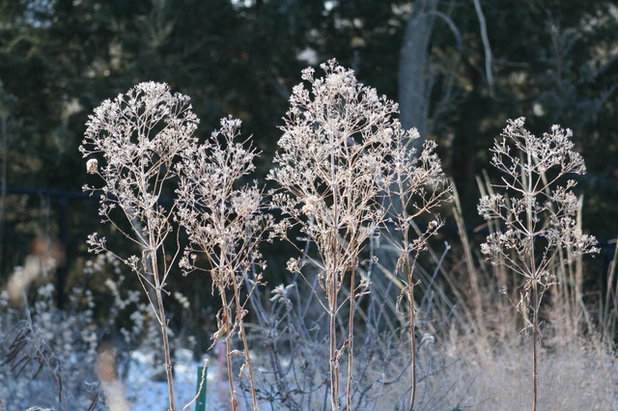
Benjamin Vogt / Monarch Gardens
Here are the empty seed heads of a Joe Pye Weed covered in hoarfrost. Isn’t that stunning? Say it with me — perennials bring better winter interest than shrubs or trees or lawn. And when the garden gets a dose of freezing fog, it’s simply one of the best days of the year. Trust me.
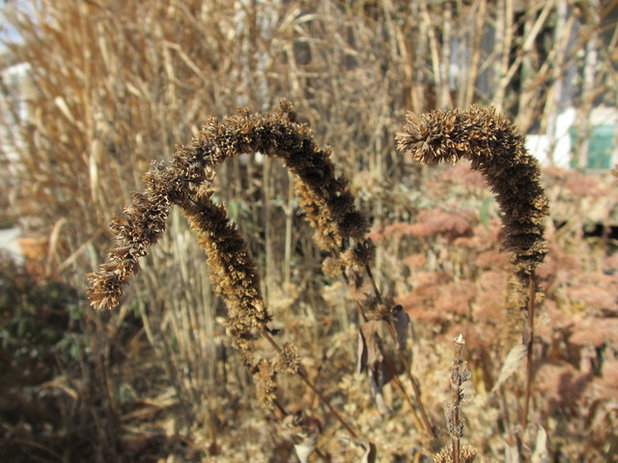
Benjamin Vogt / Monarch Gardens
4. Anise Hyssop (
Agastache foeniculum). Native to most of the northern United States, this drought-tolerant native has violet blooms that go on for months in summer. Insects love it, and its leaves smell like licorice. But I like the seed heads, which sometimes take on a gooseneck shape. They grow to 3 feet tall by 2 feet wide and prefer dry to medium soil in full sun or partial shade.
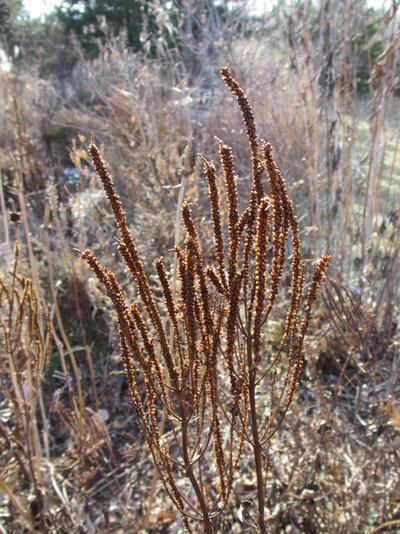
Benjamin Vogt / Monarch Gardens
5. Culver’s Root (
Veronicastrum virginicum). I can never decide if the winter form looks like Medusa’s hair or burnt Pixy Stix. Whatever the case, Culver’s Root blooms a long time in summer, its white torches attracting tons of insects. Medium to moist soil is best with full sun. Its native range is from the Plains to the East Coast.
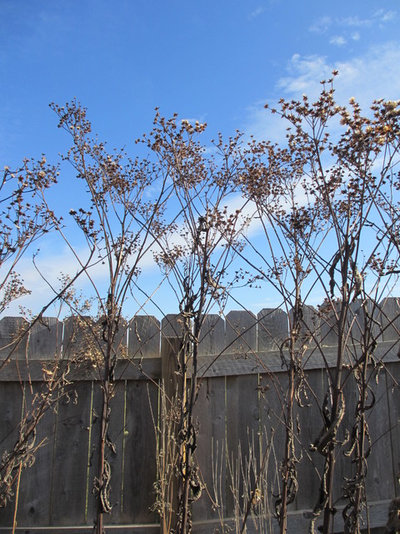
Benjamin Vogt / Monarch Gardens
6. Ironweed (
Vernonia spp). Folks aren’t sure if the common name refers to its ability to stand up against strong winds in any season or the rusty color of its seed heads. In any case, even after the seeds are gone, a stand of ironweed is a nice accent for a blue winter sky. Ironweed reaches about 5 to 7 feet tall and 2 to 3 feet wide. Plant it in full sun in medium to wet soil.
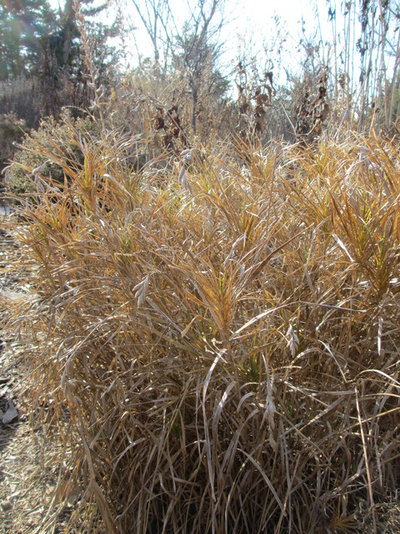
Benjamin Vogt / Monarch Gardens
7. Muskingum Sedge (
Carex muskingumensis). Grasses get too much love, and sedge not enough. There are so many kinds of sedges, and there is always one for any condition you have. Plus, they tend to be shorter, like palm sedge, which is native to the Midwest. Isn’t it lovely? You should hear it when the breeze blows! Muskingum sedge, also called palm sedge, grow to 2 feet tall and wide, preferring sun to partial shade and medium to moist soil. Plus, it gets lovely brown seed heads in late summer.
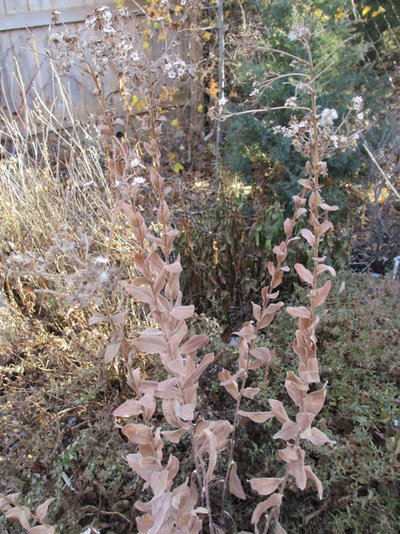
Benjamin Vogt / Monarch Gardens
8. Stiff Goldenrod (
Solidago rigida). With a footprint less than 1 foot wide and a height of 3 to 4 feet, this goldenrod can go anywhere — especially in dry soil with full to partial sun. And look at those leaves — a strange color, huh? Neato. It’s native from the eastern Plains to the Mid-Atlantic.
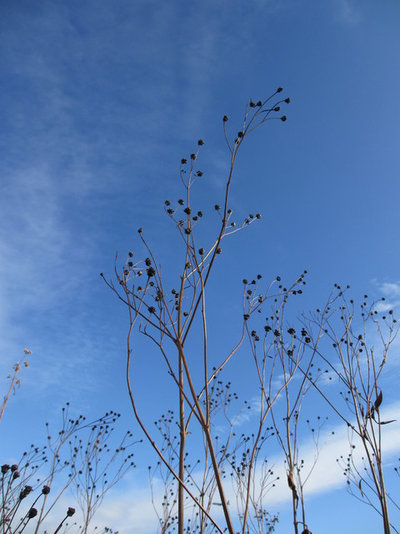
Benjamin Vogt / Monarch Gardens
9. Tall Tickseed (
Coreopsis tripteris). I always urge clients to diversify their gardens, and this means not only in color and texture but in height. Taller perennials mean a cooler space. Tall tickseed looks sweet in winter with its tiny round seed heads like periods at the end of a sentence. Preferring dry soil and sun, this perennial gets 6 to 7 feet tall and just 1 foot wide, slowly spreading by rhizomes. It’s native from the eastern Plains to the Mid-Atlantic and Southeast.
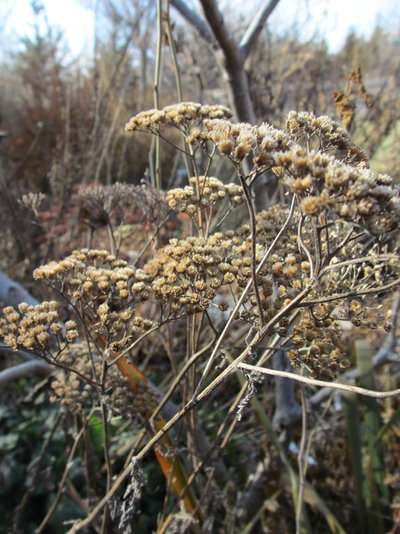
Benjamin Vogt / Monarch Gardens
10. Yarrow spp. I’ve mentioned lots of taller species, so here’s a smaller one I’m sure you’re familiar with. Yarrow holds its form nicely in winter, reaching 1 foot to 2 feet tall for most species, with about the same width. Yarrow prefers medium to dry soil and sun; you’ll find a yarrow for almost any location in the United States.
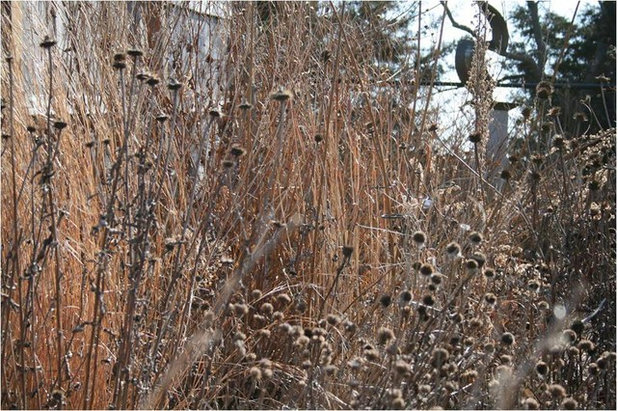
Benjamin Vogt / Monarch Gardens
So there you go: lots of wonderful native plants that look great in winter, too. What do you think? And how do you enjoy your winter garden?





